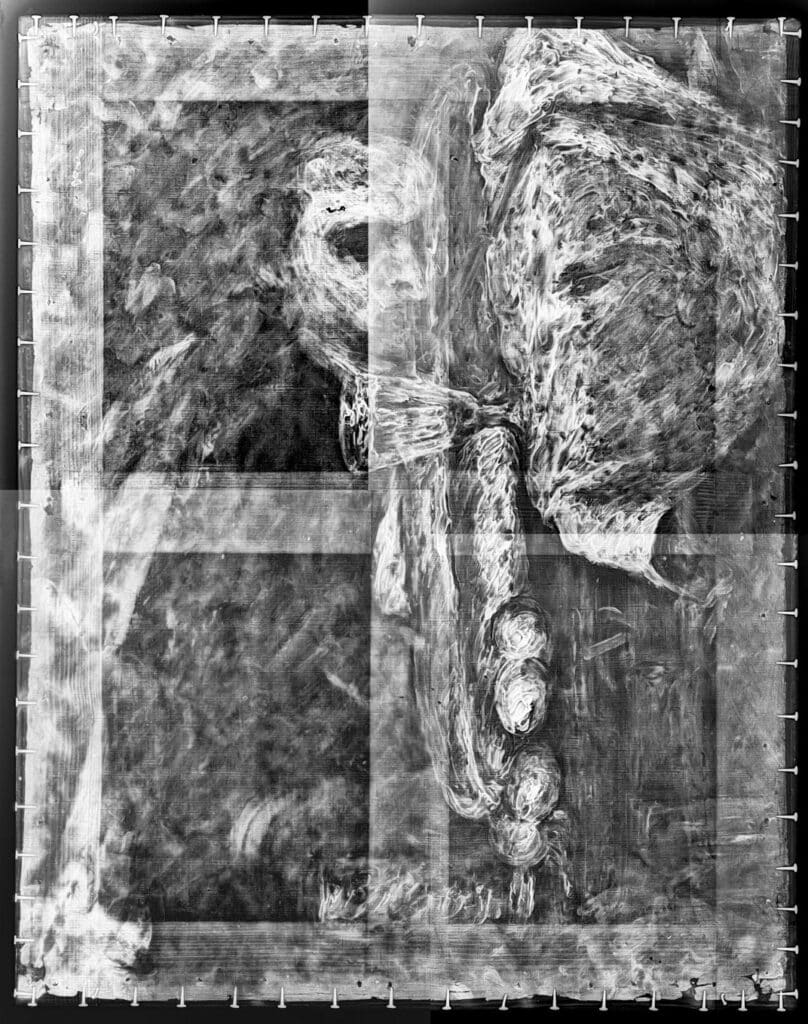
Bread, eggs and a glass of wine, this oil painting in dramatic tones has quietly hung in the collection as an early example of still life by French Impressionist Paul Cezanne. A startling discovery was revealed when a sharp-eyed chief conservator at the Cincinnati Art Museum acted on a hunch recently.
The Cincinnati Art Museum recently featured this early painting by Cezanne dated 1865, in an exhibition of Impressionist still lifes. Upon the conclusion of the exhibit, Chief Conservator Serena Urry decided to have the work examined before it was returned to its exhibition location in the collection. Her practiced eye noticed a series of paint openings in the dark background that seemed to reveal a white or light color blotches beneath the surface. This surface texture was localized in several places and did not overspread the canvas. Realizing that painting layers are known to move, she had the painting x-rayed to validate her suspicions.
The x-ray revealed a possible portrait sketch had been overpainted with the new composition. In the case of an unsuccessful start or the pressure to respond to a fresh inspiration, artists have been known to repurpose support materials, sometimes without scraping or sanding them down.
In my conversation with Peter Jonathan Bell, the Art Museum’s curator of European painting, Dr. Bell said that Serena Urry had discovered an ambitious composition in portraiture, which would be the earliest confirmed dated portrait by Cezanne. The figure, a male three quarter figure that turns toward the viewer, underlies the entire canvas beneath the dark background of the surface painting.
It was realized when the X-ray was viewed as a vertical format.
The process that lead to this discovery uses fluorescents to map elements in the painting and is the future of imaging. It does not involve any destructive testing and no sampling was removed from the work itself.
Dr. Bell is consulting with knowledgable experts about Cezanne’s early processes and the pursuit of the identity of the portrait. It is known that Cezanne was influenced by Baroque Spanish masters, while working in the dark tonal palette inspired by these masters. This color palette’s dark tonality precedes Cezanne’s later palette and his so-called constructionist style.
The painting was returned to view in the galleries on Dec. 20th, 2022.
